I started out with the 100L, varying the length of tubes that I attached.
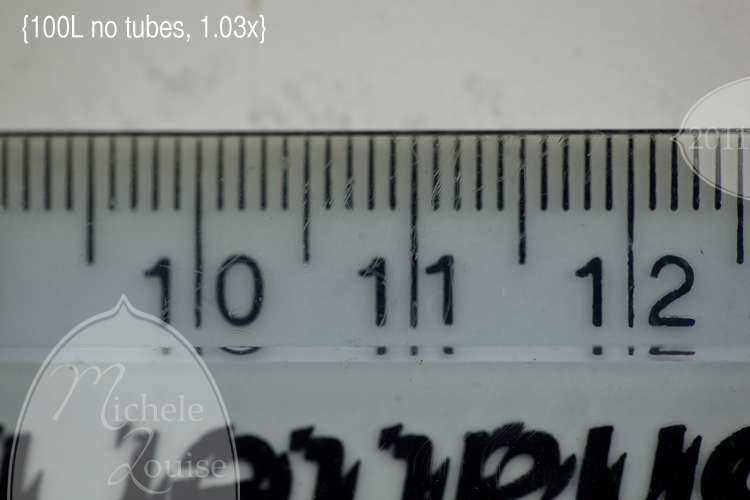
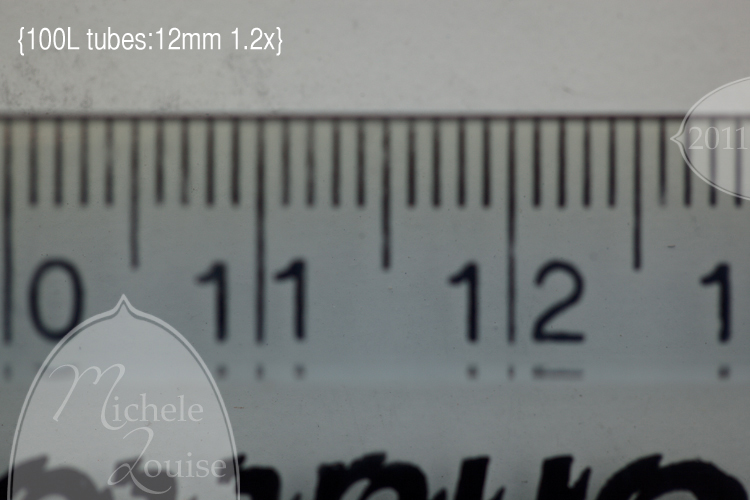
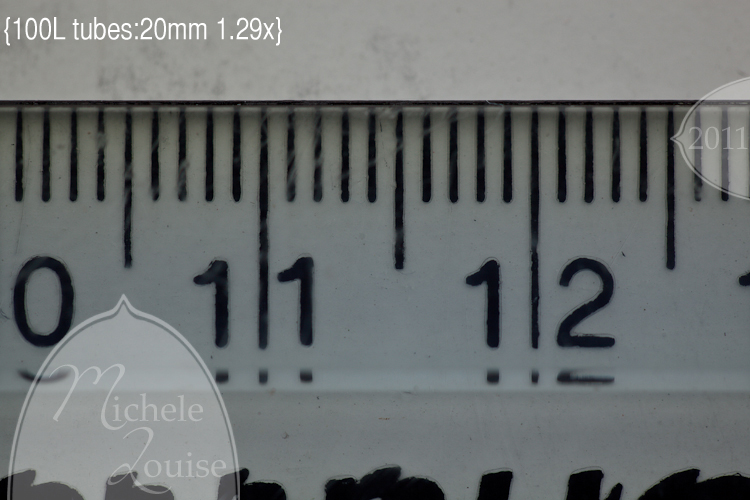

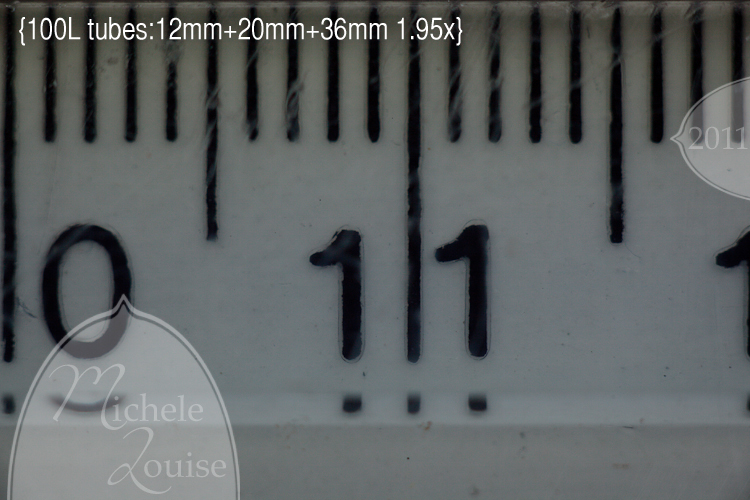
The more tubes I added the greater the magnification I got, with all of them on, I could get to nearly twice life size!
I have so many lenses that I thought for the rest I would just try to get the maximum magnification I can and compare that to the specifications for the lens's maximum magnification without tubes.
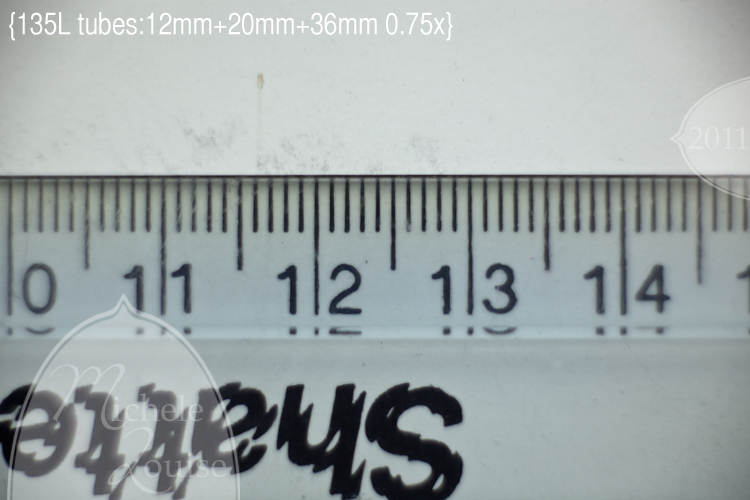

I think it is interesting with the 50 that you can start to see some barrel distortion.
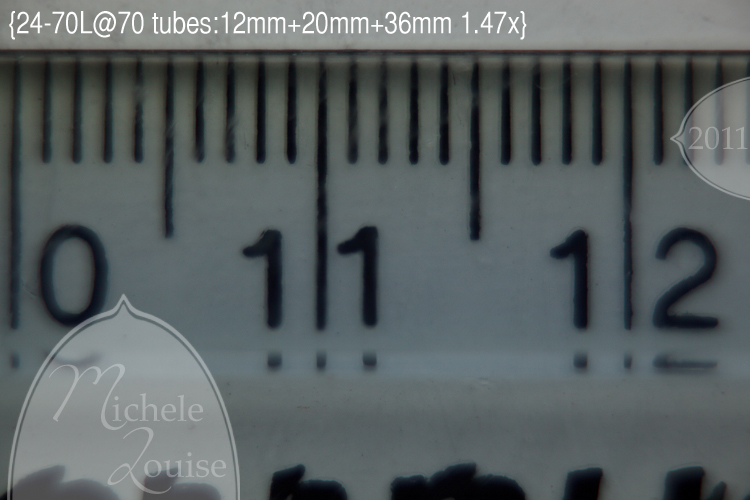
Compare this with the magnification I measure in the previous post to see that without tubes I only got 1/3 life size with this lens, with the tubes I got to almost 1 1/2 times life size, that is a big improvement.
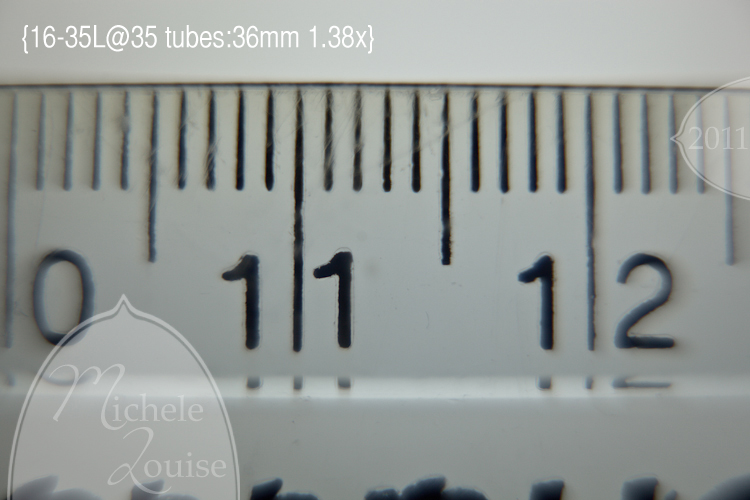
Again note the distortion and the lack of sharpness as we move away from the center of the lens, also notice that I had to cut down the number of tubes I was using. If I put on more than this the focus fell inside the lens where I couldn't measure it.
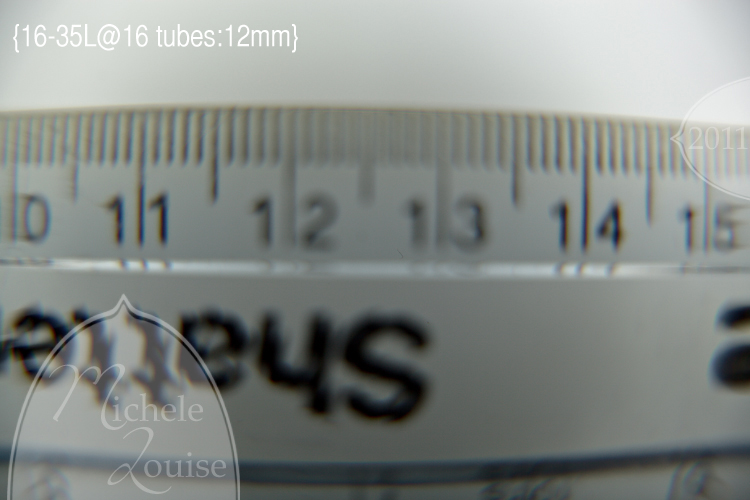
I also tested the 16-35 at 16mm, but even with the smallest tube I would have needed to put the ruler inside the lens to get it in focus, obviously that wasn't an option. You can still so how much more distortion you are getting at 16mm as well.
After all of this I had to graph my results to see if there was a trend.
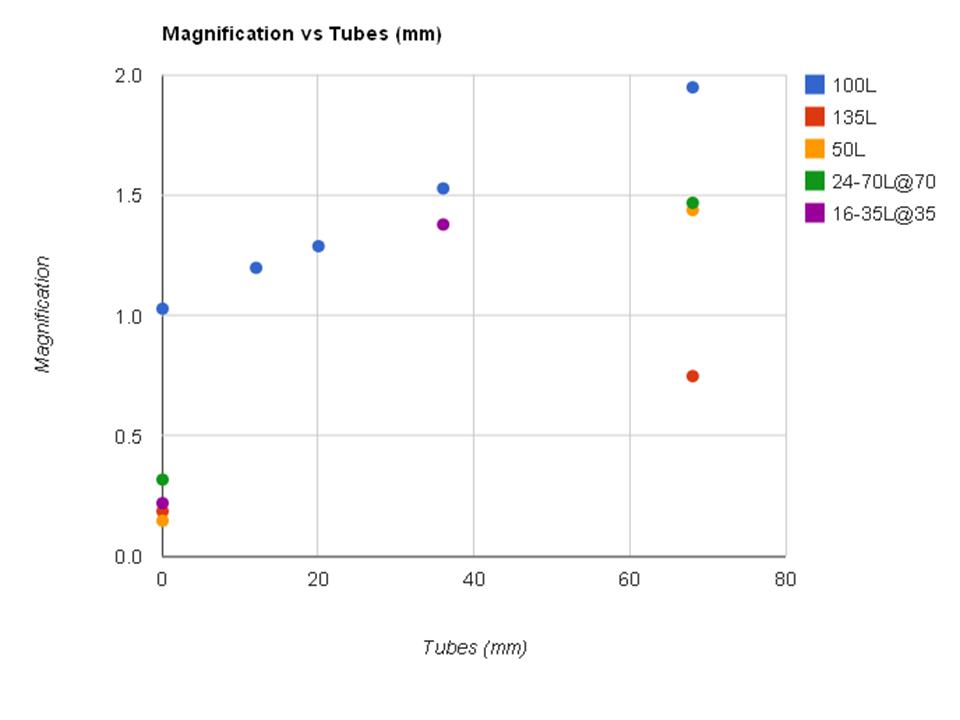
Turns out the magnification goes up in a very linear trend as you add more length of tubes in the data for the 100L. I assume it would also follow a linear pattern for the other lenses just with a different intercept and probably a different slope. On the graph I included a starting point for each lens based on the published specifications. You can see the slope is steeper at shorter focal lengths and much flatter at longer focal lengths.
What does all of this mean?
- Combining tubes with a true macro lens will let you get to magnifications larger than life size.
- Using tubes on a lens doesn't seem to change the inherent distortion in a lens, in fact it might magnify it since you are so much closer to your subject, I didn't test it but I assume this will be true with compression as well
- Not all lenses will function well with tubes, especially shorter focal lengths, the tubes may shorten the minimum focusing distance so much you might not be able to focus at all
- Tubes change the magnification in a linear fashion so if I measure a couple of points I can calculate how many mm of tubes I need to achieve a specific magnification.
- I can take just my tubes with my 24-70 or my 50 on my next vacation and not worry about missing having a macro lens with me
- The length of tubes increase the magnification faster on a shorter focal length. And conversely on a longer focal length you will need more tubes to achieve a higher magnification

3 comments:
Great experiment, as always! How interesting to see.
Great post! That last one is crazy!
Very interesting and a great post!
Post a Comment